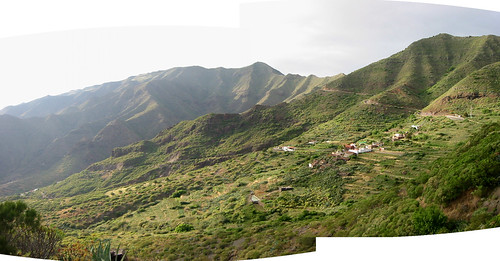On Friday February 9 Güímar held in the approval of the People's Legislative Initiative, which expanded the protection and reserve the entire Güímar badlands. The event included a talk with the title
El Malpais to debate: the future since 2007
Juan Sánchez, Professor of Applied Economics at the University of La Laguna and member of the Coordinadora Popular Ecologist Corner outlined the history and current status of the ILP of El Rincon, La Orotava, highlighting the long road that opens forward after the time of approval law.
José García Casanova, a biologist and former chief curator of the Reserve reported the different proposals for the protection of the Badlands and highlighted biodiversity data, comparable in protected areas since 1987 and those just to protect. Moses
The socio-economic development compatible
Simancas, Doctor of Geography and Professor of the University of La Laguna extended the debate to areas natives of the Canary Islands, raising questions about the reasons for their protection and stressing the need for citizen participation in their management. Students of
CEO Andres Orozco Arafo
and IES Mencey Güímar Acaymo
exposed materials and presented findings of their work around the Badlands, both in ideas about their participation in management and in control of introduced species.
The talks ended with a roundtable on the Malpais near future, moderated by Jose Mesa, the Civic Platform which prompted the ILP, who announced the launch of a new project called Malpais Forum open anyone interested, in order to promote citizen participation in the management of this territory. The booklet
hand
 The basic purpose of the declaration of a protected natural area is to ensure the conservation of a series of natural, cultural, aesthetic and scientific society recognized and backed by a legal standard. In our reality, these goals should be achieved in areas where people have used throughout history the natural resources, changing landscapes and biological communities. Protected areas thus conceived not as an end in themselves but as tools for managing a complex and dynamic territory.
The basic purpose of the declaration of a protected natural area is to ensure the conservation of a series of natural, cultural, aesthetic and scientific society recognized and backed by a legal standard. In our reality, these goals should be achieved in areas where people have used throughout history the natural resources, changing landscapes and biological communities. Protected areas thus conceived not as an end in themselves but as tools for managing a complex and dynamic territory. Incorporating socio-economic approaches to the central concerns of nature conservation in protected areas has led to the consideration of the welfare of the population living in these areas and their surroundings, and the recognition and valuation a positive relationship between certain types of economic exploitation and ensuring survival of natural values. Protected areas are increasingly seen as opportunities to promote more sustainable patterns of development, export to remaining territory.
development policies are limited when protected areas are considered as isolated units of the remaining territory. ... must rely on local authorities and the participation of citizens. Natural areas can not be conceived as static, but must incorporate the scientific and technological advances and have to respond to social and economic environment in which they are embedded. Action Plan for protected natural areas. Europarc-Spain 2001
0 comments:
Post a Comment